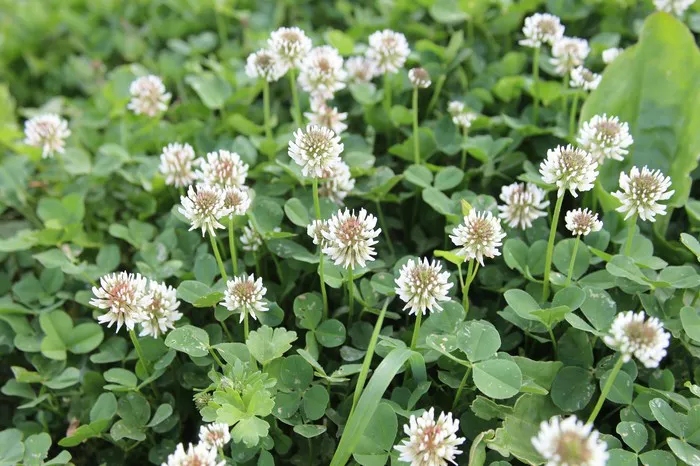Clover flowers, with their delicate petals and vibrant colors, are a familiar sight in fields, meadows, and gardens worldwide. Often considered weeds by some, and treasured wildflowers by others, clovers hold a unique charm that captivates both botanists and casual observers alike. In this comprehensive guide, we delve into the anatomy, variations, significance, and cultivation of these enchanting blooms.
Anatomy of Clover Flowers
Clover flowers belong to the genus Trifolium, which encompasses hundreds of species within the Fabaceae family. Their distinctive anatomy contributes to their recognition and identification:
1. Petals: Clover flowers typically consist of small, rounded petals arranged in a characteristic three-leaf clover pattern. Each petal may vary in color, ranging from creamy white to vibrant pink or purple hues, depending on the species.
2. Inflorescence: These flowers form dense, spherical clusters known as inflorescences or “heads.” Each head contains numerous individual flowers, tightly packed together.
3. Stem and Leaves: The stem of clover plants is usually slender and branched, supporting a trifoliate arrangement of leaves. Each leaflet is oval-shaped with serrated edges, contributing to the plant’s distinct appearance.
4. Reproductive Structures: Clovers are hermaphroditic plants, meaning they possess both male (stamen) and female (pistil) reproductive organs within the same flower. This facilitates self-pollination, although cross-pollination by insects is also common.
Variations in Clover Flowers
Clover flowers exhibit remarkable diversity across different species and cultivars, showcasing an array of colors, sizes, and growth habits. Some notable variations include:
1. White Clover (Trifolium repens): Commonly found in lawns and pastures, white clover bears clusters of small, white flowers with a faint tinge of pink. It forms low-growing mats and spreads through creeping stems called stolons.
2. Red Clover (Trifolium pratense): As its name suggests, red clover features striking reddish-pink flowers and is renowned for its medicinal properties. It is often cultivated as a forage crop and is valued for its nitrogen-fixing abilities, which improve soil fertility.
3. Crimson Clover (Trifolium incarnatum): Characterized by its vibrant crimson blooms, this annual clover species is favored as a cover crop and green manure. Its deep taproot helps improve soil structure and prevents erosion.
4. Alsike Clover (Trifolium hybridum): Alsike clover displays delicate, pinkish-white flowers and is well-suited to moist, acidic soils. It is commonly used in pasture mixtures and as a component of wildflower meadows.
5. Clover Cultivars: Numerous cultivated varieties of clover have been developed for specific purposes, such as ground cover, livestock forage, or ornamental use. These cultivars may exhibit unique flower colors, growth habits, or disease resistance traits.
Significance of Clover Flowers
Beyond their aesthetic appeal, clover flowers hold ecological, agricultural, and cultural significance:
1. Ecological Role: Clover plants play a vital role in ecosystem health by enriching soils with nitrogen through a process called nitrogen fixation. This benefits neighboring plants and promotes biodiversity in grasslands and meadows.
2. Livestock Forage: Many clover species are valued as nutritious forage for livestock, providing protein-rich grazing options for cattle, sheep, and other ruminants. Incorporating clover into pasture mixtures can enhance animal nutrition and reduce reliance on synthetic fertilizers.
3. Pollinator Habitat: The nectar-rich flowers of clover attract a variety of pollinators, including bees, butterflies, and hoverflies. By supporting pollinator populations, clover contributes to the pollination of nearby crops and wildflowers, ensuring food security and ecosystem resilience.
4. Cultural Symbolism: Throughout history, clover has been imbued with cultural symbolism and folklore. The four-leaf clover, a rare genetic variation of the common three-leaf clover, is considered a symbol of luck and prosperity in many cultures, inspiring legends and superstitions.
5. Medicinal Uses: Certain clover species, such as red clover, have been traditionally used in herbal medicine for their purported health benefits. Red clover tea, for example, is believed to alleviate menopausal symptoms and promote overall well-being, although scientific evidence supporting these claims is limited.
Cultivating Clover Flowers
Whether for agricultural purposes, landscaping, or wildlife conservation, cultivating clover flowers can be a rewarding endeavor. Here are some essential tips for successful cultivation:
1. Site Selection: Choose a sunny to partially shaded location with well-drained soil for optimal clover growth. Consider the specific requirements of the chosen clover species or cultivar, such as soil pH and moisture levels.
2. Seed Selection and Sowing: Select high-quality clover seeds suited to your intended use, whether for forage, ground cover, or ornamental purposes. Sow seeds in early spring or late summer, ensuring good seed-to-soil contact for germination.
3. Soil Preparation: Prepare the planting area by removing weeds, loosening the soil, and incorporating organic matter to improve soil fertility and structure. Conduct a soil test to determine nutrient levels and pH, making any necessary amendments as recommended.
4. Maintenance Practices: Keep clover plants healthy and vigorous by providing adequate water, especially during dry periods, and controlling competing vegetation. Mowing can help maintain desired heights and prevent clover from becoming overly dominant in lawns or pastures.
5. Disease and Pest Management: Monitor clover crops for signs of pests or diseases, such as aphids, leafhoppers, or powdery mildew. Implement integrated pest management strategies, including cultural practices and, if necessary, targeted pesticide applications.
6. Harvesting and Utilization: Depending on the intended use, harvest clover forage at the appropriate stage of growth to maximize nutritive value and palatability for livestock. For ornamental purposes, deadhead spent flowers to prolong blooming and prevent self-seeding.
Conclusion
In conclusion, clover flowers embody both natural beauty and practical utility, enriching landscapes, ecosystems, and cultural traditions worldwide. Understanding their anatomy, variations, significance, and cultivation techniques enables individuals to appreciate and harness the myriad benefits of these charming blooms, whether in the garden, pasture, or beyond.


